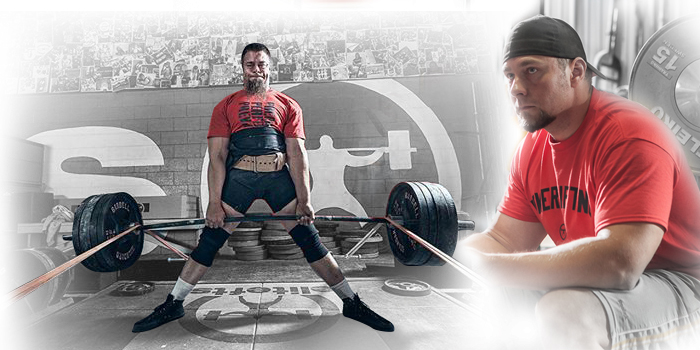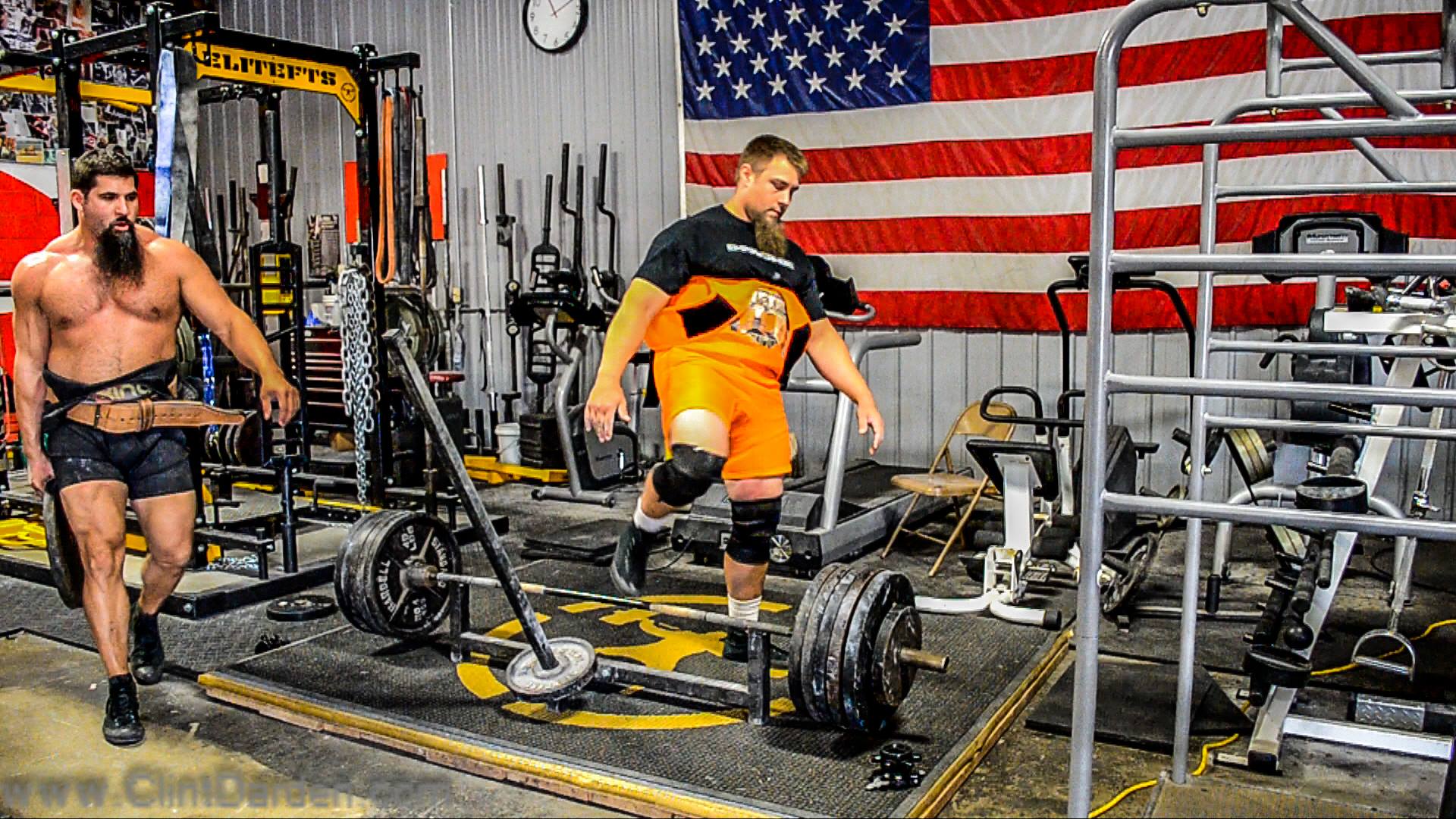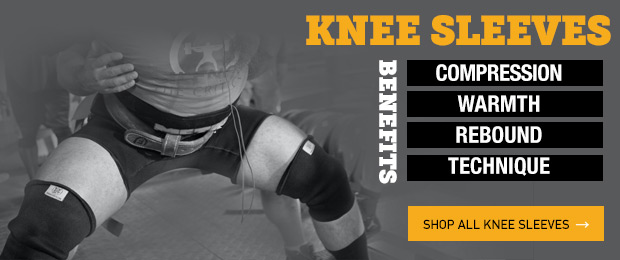
I am not a doctor and what I write below is simply what I have personally done in my training to continue competing with minimal pain. I still have goals in the sport of powerlifting, but have given myself a timeline to stop myself before I totally tear my right knee apart. In the first of two parts, we will go through the ideas behind adapting your training to an injury, and in the second I will talk about how I've applied all this to myself. So, here are some of the changes to consider so that you can continue to chase your competitive goals.
Warm-Ups
When I started powerlifting, I was one of those guys who could come in and squat to warm up for squats. Now, as I’m approaching 40 years old, my warm-ups now start with general work, general specific work, before going into a specific warm-up. Without this style of a warm-up, my joints feel cold and achy.
- General — Liniment as needed, walking on a treadmill, dragging the sled (5-10 minutes).
- General Specific — Activation exercises (scapular push ups, TKE’s, etc.), band traction, prehabilitation work.
- Specific— Warming up with the bar.
RECENT: 4 Things Your Body Needs to Stay Symmetrical
Minimal Effective Dose
If you are like me and have a joint injury, then you know that there are only so many reps you can do before you are either finished with the sport or need to get a joint replacement. You know that you can’t afford to waste precious reps doing things that aren’t absolutely worth it. Personally, I target every rep I do towards deadlifting 800 pounds.
This will mean that instead of just chasing volume with reps, you’ll have to always find the minimal effective dose that you need in order to continue to improve. This attitude also applies to warm-ups, foam rolling, and pretty much everything you do in the gym.
On the flip side to this will be those exercises you can do that you can push without any additional damage. For me, reverse hypers are the key, since there is no knee flexion, I can work the hamstring (at the hip), glutes, and low back without the compression on the joint. I can push six to eight sets to build my volume there, cutting back to the minimum for squats and deadlifts when necessary.
Make It Hard
By using things like drop sets, clusters, isometrics, partials, occlusion, or slow tempos, you can take a normal exercise and really turn it into a challenge. This will help you challenge yourself to get the most out of every rep, since we already discussed how you certainly can't be wasting your reps. You can even use these techniques as a pre-fatigue to help warm up joints or use it to finish off your workout.
For example, I am very limited in the quad exercises I can do because of my knee. However, something I’ve found that I can do is a Serrano split squat. I know with absolute certainty that each rep of these I do makes me better. These split squats combine isometrics and partials to take the time under tension through the roof. It’s important to find your “Serrano split squat” exercise.
Looking for Other Answers
Never stop looking for new ways to improve your injury. With my knee, nothing is out of the question: nutrition, massage, Grastons, MAT (Muscle Activation Technique), acupuncture, chiropractic, and even Platelet Rich Plasma or stem cells if I had the money. Continue looking outside the box and don’t be afraid to get a little unconventional. It might take one or two unsuccessful before you find something to actually help.
Balance
This is something with which I struggle. Comparatively, my hamstrings are much stronger than my quads. This leads to knee pain, which, on the surface, would suggest I need to take time off of quad work. However, it’s just the opposite. When my knee starts to hurt, I need to take a day or two off of hamstring work and add in a little more quad work. This helps keep things in balance.
Maybe you’ve been in the same situation, but with a different body part, such as the elbow. For something like that maybe you don’t need to do more tricep extensions, rather some biceps curls. In any case, consider the balance surrounding a joint or problem you’re having and see if you can even it out.
Conclusion
With most injuries, not only will there not be an easy fix, but there also won't be one fix. Ten small things together may be what it takes to get you moving forward again. And sometimes something that has been working may no longer help and you'll have to find something new. Use the injury as a way to learn your limits, and then test them sparingly. Play it smart and understand that while today might not be your day. In fact, perhaps you’ll always have to work around a given injury, since it can’t go away, but you can always train around it. In part two, we'll talk about how I've specifically dealt with an injury that's required each of these techniques and even a couple more.











1 Comment